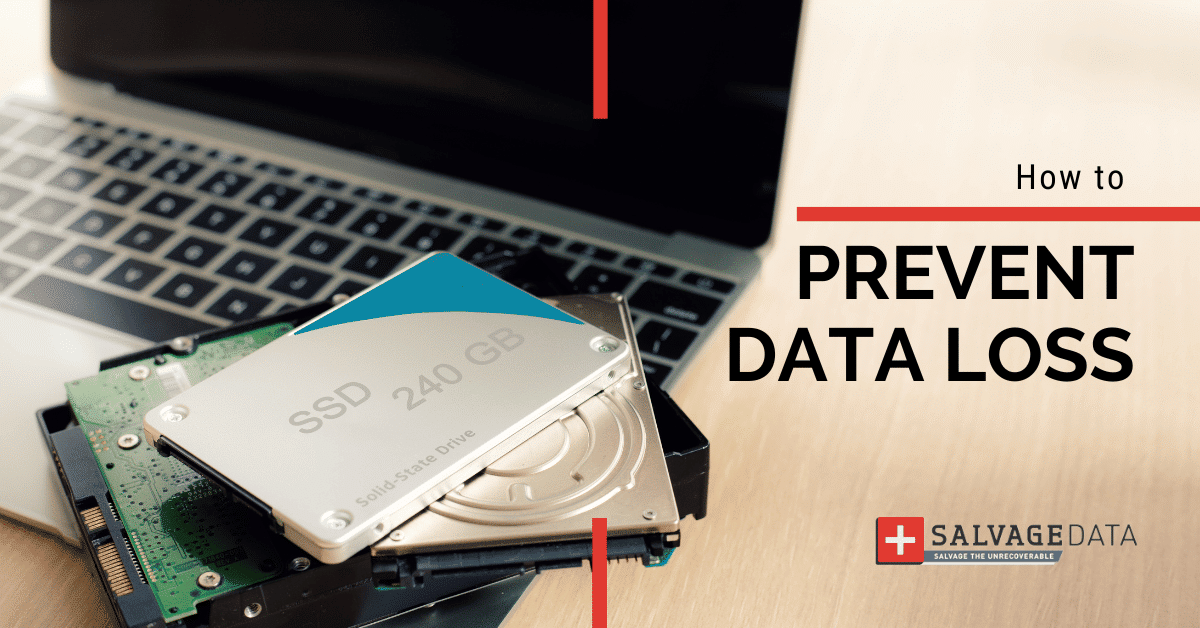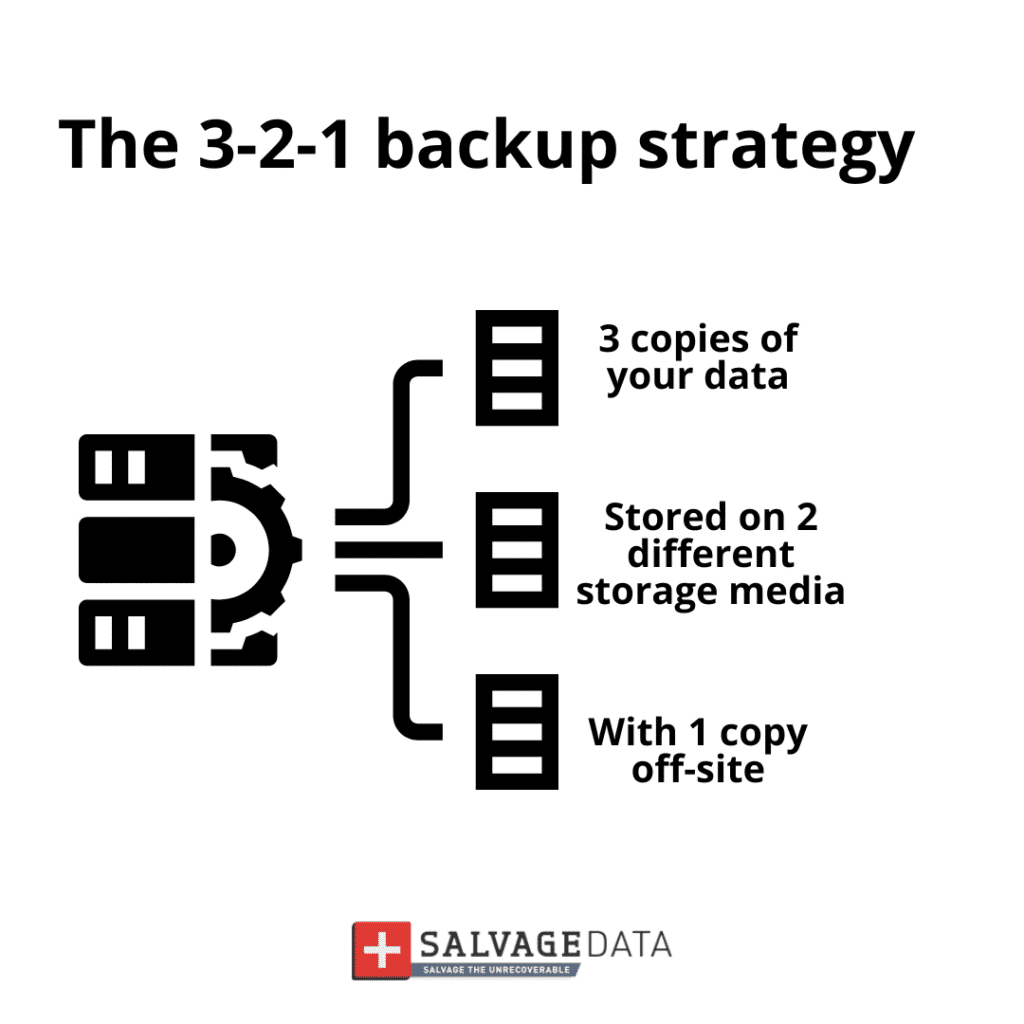
I think there's an issue with my storage device, but I'm not sure Start a free evaluation →
I need help getting my data back right now Call now (800) 972-3282
As we increasingly entrust our memories, work, and personal information to storage devices, the threat of losing data is more significant now than ever before.
In the evolution of data storage, Solid State Drives (SSDs) and traditional Hard Disk Drives (HDDs) have become indispensable in our daily lives. However, with great reliance comes an even greater need for protection.
Data loss is not merely an inconvenience. It is a potential catastrophe with far-reaching consequences. Imagine losing irreplaceable family photos, critical work documents, or important personal records. The repercussions extend beyond the emotional toll. They also include financial losses, compromised privacy, and even threats to one’s professional standing.
This comprehensive guide aims to empower you. It will provide the knowledge and strategies needed to fortify your digital fortress.
Overview of data loss causes
Data loss is an ever-present threat in our digital world. Understanding its common causes is the first step towards safeguarding our valuable information.
Here, we uncover the complex network of factors contributing to data loss. These include hardware failures, unintentional deletions, and malware attacks.
1. Hardware failures
Hard Disk Drives (HDDs) and Solid State Drives (SSDs) are not immune to failure. These devices can encounter issues like mechanical failures, bad sectors, or electrical malfunctions.
According to recent research, 67% of data loss is due to hard drive crashes or system failure. Approximately 140 thousand hard drives crash every week. Sixty percent of these crashes are attributed to mechanical issues. This underscores the fragility of these components. The remaining 40% result from human errors or mishandling, like dropping or jostling computers or laptops.
As technology evolves, Solid State Drives (SSDs) have emerged as a resilient alternative to traditional Hard Disk Drives (HDDs). Unlike HDDs, SSDs lack moving parts, making them inherently more durable.
This characteristic renders SSDs less prone to malfunctions or crashes, thereby reducing the risk of data loss.
Recognizing indicators like frequent crashes and unusual heat, among others, is essential to detecting hardware failures and preventing data loss.
2. Human error
People make mistakes, and sometimes those mistakes lead to big consequences. About 14% of data loss happens because of human error.
Human error serves as a catalyst for various data loss causes. Including hard drive damage, liquid spills, software corruption, and hard drive formatting.
Mitigating human error in data handling requires comprehensive training. Users must understand the company’s data processing. They must also understand the backup systems.
Minimizing errors from human oversight can also be achieved through software mechanisms. Automation diminishes human intervention in data handling, lowering the risk of inadvertent actions.
In instances of accidental deletions or overwrites, data recovery may entail searching the computer’s Recycle Bin or accessing previously saved document versions.
When data retrieval becomes challenging, file recovery software becomes invaluable. This software scans the hard drive, identifying and restoring lost data. It offers a potential lifeline in data restoration efforts.
3. Cyberattacks
When it comes to what can mess up your data, viruses are often the first thing that comes to mind. Viruses can swipe and erase lots of your data, slowing down or even wrecking how a business operates. They usually sneak into a computer through tricky emails or tempting links that a person clicks on. This lets the virus or malware get into the computer, causing havoc and stealing or damaging important files.
To stay safe, use reliable antivirus software. Keep it updated all the time, and regularly check your computer for viruses. Also, make regular backups of your system, just in case a nasty program messes with your data. Backed-up data is often the key to recovering lost files from viruses or malware. This applies whether you use a regular hard drive or the faster, newer kind called an SSD.
Now, let’s talk about hackers and people on the inside who might mess with your data. Hacking and data breaches happen a lot nowadays, so having strong cybersecurity is crucial. If unauthorized people get into your network, they can do serious damage by deleting or stealing whatever they want. They might even mess up how your whole system works. Protect yourself by using firewalls to keep hackers out.
Hackers find ways to sneak in, so you need to be careful. Don’t use servers with weak security, make sure your firewalls are solid, and avoid using easy-to-guess passwords. Sadly, sometimes your own employees or insiders can mess with your data too. To prevent this, give different levels of permission to employees. Make sure no one gets access to critical data they don’t need. Keep an eye out for any signs that someone on the inside might be up to no good.
Best practices for preventing data loss
In the world of digital info, keeping your valuable data safe is crucial for everyone, whether you’re an individual or a business. To do that, you need to follow the best practices for preventing data loss.
Regular backups
Regularly backing up your data is crucial, as it acts as a safety net, ensuring you won’t lose everything if something goes wrong.
Setting up automated backups using external drives and cloud storage simplifies the process. It makes it a routine without requiring constant manual effort. Using backup software adds an extra layer of convenience. It streamlines the backup process and ensures that even less tech-savvy users can effectively protect their data.

Regular software updates
Keeping your operating system and applications up to date is vital for maintaining the health and security of your computer, SSD, and hard drive.
Regular updates often include security patches that fix vulnerabilities, preventing potential breaches. By staying current with software updates, you enhance the overall performance of your devices while minimizing the risk of exploitation by malicious actors.
Choosing quality storage devices
Investing in reputable SSDs and hard drives minimizes the risk of failures and ensures that your data storage is both efficient and durable.
By choosing quality devices, you decrease the likelihood of unexpected data loss due to hardware malfunctions.
You can check out our complete guide on the best SSDs and hard drives according to their applications.
Password protection and encryption
Using strong passwords adds a robust layer of protection to your devices. It prevents unauthorized access and secures your data from prying eyes.
Additionally, incorporating encryption provides an extra level of security by scrambling data, making it unreadable to anyone without the proper decryption key.
Several manufacturers have devices that offer automatic encryption, ensuring data protection.
Anti-malware software
Installing and regularly updating antivirus and anti-malware programs is fundamental for safeguarding your system against malicious threats.
Security software actively scans for and removes harmful programs, acting as a frontline defence against various cyber threats.
Make sure your web browser and email also have the option to block adware, unwanted advertisements displayed on a user’s device, and anti-phishing. Anti-phishing refers to measures and technologies implemented to protect against phishing attacks.
Multi-factor authentication (MFA)
Make sure you are using MFA on all your accounts. This provides an additional layer of account security by requiring users to provide two forms of identification, typically a password and a unique code sent to their mobile device.
Physical security measures
Protecting devices from theft and physical damage is essential for maintaining the integrity of your data.
Recommendations for secure physical storage and handling, such as using lockable cabinets or carrying cases, contribute to the overall safety of your devices.
Also, make sure to handle the devices, especially hard drives, with extra care to prevent bumps and drops.
Conclusion
Preventing data loss on SSDs and hard drives requires a holistic approach, combining technological solutions with user education and best practices. By adopting these strategies, you can fortify your digital environment and minimize the risk of data loss, ensuring the longevity and integrity of your valuable information
In the event of data loss, contact our data recovery team to ensure your files are safely restored.